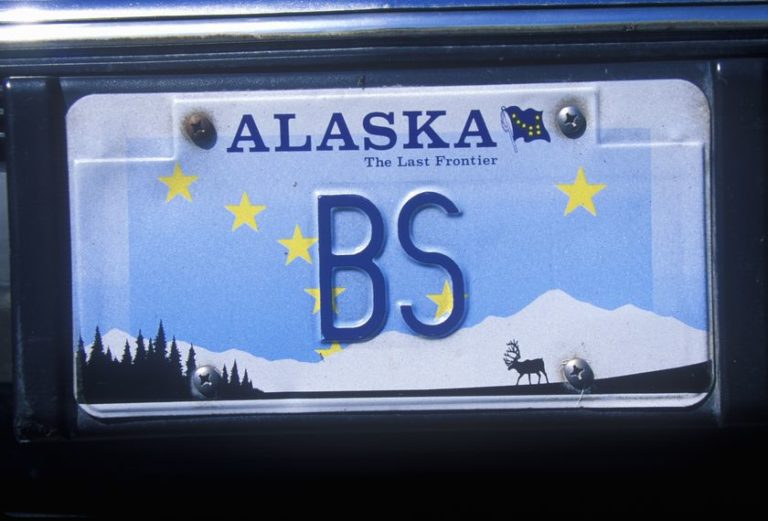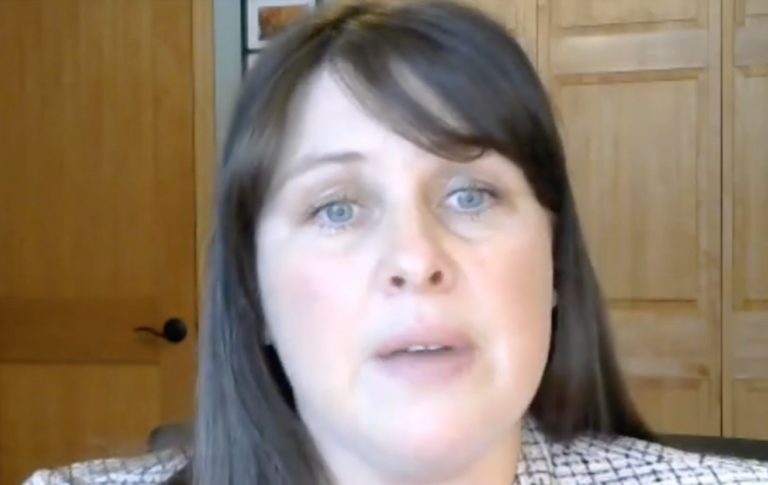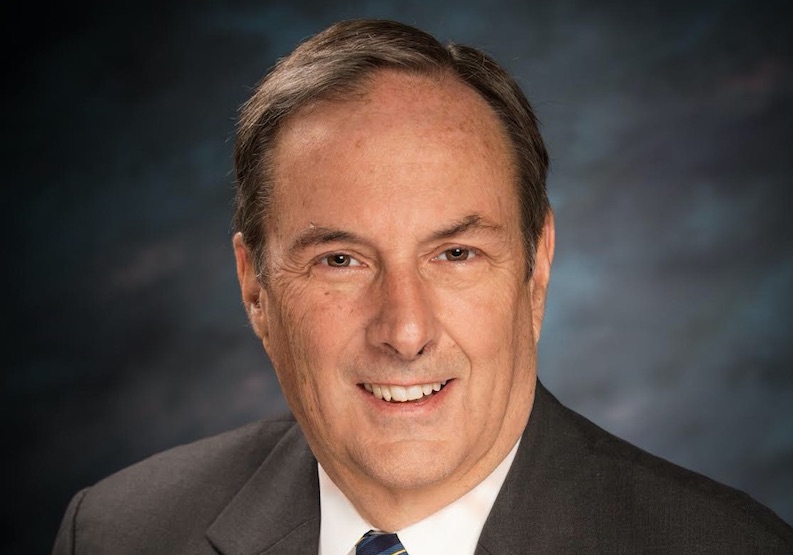Jan. 28, 2021
Lieutenant Governor Meyer, President Micciche, members of the Thirty-Second Legislature, and fellow Alaskans:
Exactly one year ago tonight, the pandemic landed on our nation’s shores just a few miles from where I sit.
From the beginning, the deck was stacked against us. They pointed to our lack of infrastructure and hospital capacity. They claimed Alaska would suffer the fate of third-world countries. Health experts warned us of 14,000 hospitalizations and over 10,000 dead.
I would be lying if I said the tragedy of 1918 didn’t weigh deeply on me. I lived in those villages and was forever changed by the stories of elders who survived. These stories compelled me to ensure there would be no repeat of 1918 on my watch.
From that first night, we committed to handling this virus and its fallout without politicizing it. Without partisan bickering. We were one in our battle against this poorly understood foe.
Today, and against all odds, Alaska leads the way in testing and vaccinations. We enjoy the third-lowest mortality rate in the nation. Those who predicted utter devastation were wrong, because we’re not just Americans, we’re Alaskans. We shine when others expect us to fail. When we get knocked down, we create opportunity from calamity.
Alaskans are a different breed. Our history and culture has been honed by our close proximity to nature and our distance from our fellow states. This frontier experience, this ability to rely on ourselves and each other, is what gets us through everything from earthquakes, to floods, to volcanic eruptions, and the same goes for this pandemic.
We don’t run and hide as Alaskans. We’ve inherited that same mentality that helped build this country and helped build this great state: That we are going to come out on top no matter what.
I remember a meeting last spring with a few members of my amazing health team. We were on a video call with Hans Vogel who owns a manufacturing company in Palmer. We dumped a bunch of PPE and testing supplies on a table, and asked if there was anything here he could make. As we all know, Hans and Triverus ended up making over 100,000 swabs for testing when we needed them the most.
Distilleries stepped up and began producing hand sanitizer. Everyday Alaskans organized charity campaigns and food drives out of the goodness of their hearts. Heroes like John Sturgeon used their business connections overseas to secure an entire aircraft full of PPE when every other state was struggling to source supplies.
The University of Alaska graduated 260 nurses to the pandemic frontlines as well as 400 contact tracers. With the help of the Legislature, many of these nurses were graduated early thanks to nearly 300 regulatory suspensions that took place under the emergency declaration.
We created the first traveler testing program in the nation, catching nearly 2,400 cases of COVID at our airports. We held a safe summer fishing season that many told us wouldn’t be possible.
None of this would’ve occurred without your help and the tireless work of Alaska’s health team. Individuals such as Commissioner Adam Crum, Dr. Anne Zink, Director Heidi Hedberg, Dr. Joe McLaughlin, and the thousands of public servants and frontline heroes working overtime month after month, right up until today.
Because of what we accomplished together Alaska’s response was recently recognized as the best in the nation.
***
As a result of the pandemic, we also incurred an economic crisis. Now comes the hard work of getting our economy up off its knees.
Last year, we worked quickly to provide direct relief to 200 communities and nearly 6,000 small businesses. Just two weeks after we received our CARES Act relief, our spending plan was approved by the Legislature.
We disbursed $1 billion in unemployment relief to over 100,000 Alaskans. We stood up a housing relief program. We delivered a historic early PFD which assisted thousands of Alaskans in their time of need.
And while our statewide mandates were among the least restrictive in the nation, especially after we more fully understood the nature of this virus, the economic fallout from the federal closure of the cruise season, massive decline in tourism, and business closures in some of our cities set the stage for economic hardship.
We are fortunate that we have the tools to greatly assist Alaskans in their time of need, but we need to act quickly. As part of my Path Forward for Alaska, I’m asking that $5 billion, a portion of the earnings of this past year, be put toward pulling Alaskans out of a crisis the likes of which this generation has never faced.
This is a once-in-a-lifetime budget for a once-in-a-lifetime disaster. A portion of this relief will provide every eligible Alaskan with $5,000, equaling the remainder of last year’s PFD and the full statutory dividend for 2021.
If we cannot find it within ourselves to put to use less than one year’s worth of fund growth, so that the thousands of Alaskans and businesses impacted can get back on their feet, then we have to question our priorities as leaders in Alaska during its time of need.
***
In addition to getting Alaskans help now, we need to create a long-term fiscal solution. Creating generational opportunities starts with getting our own fiscal house in order.
- First, we must implement a spending cap that works – a cap that causes government to pass budgets it can afford.
- Second, any new, broad-based tax must be approved by the Alaskan people. We must ensure the people are partners in any taxation and spending plan going forward.
- Finally, we must guarantee there is a dividend for future generations and that the Earnings Reserve and integrity of the fund is protected forever.
My proposal guarantees dividends for future generations and ensures our state can continue to function.
As I’ve always said, Alaskans must be part of any change contemplated to the dividend formula. My proposal calls for a vote of the people as early as this spring on any future changes to the dividend program.
We must also look for creative ways to augment our revenue. This session, I’ll be supporting legislation to bring gaming to Alaska. Alaska can no longer afford to deny itself a revenue stream available to nearly every other state in the nation.
Along with enhancing revenue, gaming could create hundreds of high-paying jobs in some of our communities, and we would join a long list of states that have embraced gaming for some time.
***
Alaskans have always been a different breed. We’ve been hardened with the passage of time and adversity through the generations. Very few come to the Last Frontier hoping to live a life of luxury. We cherish the challenge of building a future in the most rugged, beautiful, and resource-laden subcontinent on earth.
And what this pandemic has taught us is a hard lesson. In order to secure opportunity for our state and future Alaskans, we must begin the process of building a sovereign that can weather any disaster thrown our way. Whether it’s food security, energy production, pharmaceuticals, or critical minerals, Alaska has more potential than most independent countries.
I’ll never forget when I got the news last spring that the Port of Seattle was contemplating closure as a result of this virus. That was truly a wakeup call. Ponder that for a moment. The most important port that serves Alaska was contemplating closure as a result of the pandemic.
You have to wonder, where would this have left us?
At the same time, our Canadian friends to the east were beginning the process of closing their borders to the passage of goods, services, and people.
For a few moments in time, it looked like we were entirely on our own. Alaska was likely to be cut off and would need to turn inward and rely on our own resources in order to get through this. This demonstrated to me that we have to examine our own vulnerabilities and reevaluate our dependence upon others.
While we must continue to be an exporter of resources, we must also ensure that we have the capabilities to create and enhance new sectors of our economy to go it alone in the event of a future disaster.
As a result, I charged my administration with researching how Alaskans can become more self-reliant within the framework of federalism. Part of becoming a truly self-reliant sovereign starts with the basics: food, security, energy, and medicine.
My administration has embarked upon a process to strengthen our agricultural sector. We’re going to start by making it easier for farmers to secure land with fewer regulations. We’re going to support the growth of our agricultural sector and allow farmers to prosper.
In addition, we’re going to continue to support our growing mariculture industry. This industry has unlimited potential to provide food, wealth, and jobs to many Alaskans.
I plan to begin conversations with industry stakeholders to determine what pharmaceuticals we can produce on our own.
And as we look to increase our self-reliance – as we prepare to stand up new industries, and to create the Alaska of the future, government can help when appropriate, but must get out of the way when it can’t.
We’re taking a hard look at regulations that stifle innovation and frustrate Alaskans. If a regulation needs to be suspended during a crisis, we have to ask ourselves, why was it there in the first place and can we live without it?
I’ll be working with my departments and the Legislature to review as many of these regulations as possible for potential modification or repeal for the benefit of all Alaskans.
***
If Alaska is to survive on its own, we must prioritize energy independence. For too long, our economy has been held back by the extreme cost of energy in many parts of our state. Alaska is surrounded by abundant sources of energy, both traditional and renewable, yet our energy costs are the second-highest in the nation.
This just isn’t right. We must make the pursuit of cheap and reliable energy a priority.
We can start by harnessing the incredible renewable energy resources within Alaska itself. Alaska possesses more tidal energy than the rest of the nation combined. Our potential for wind, geothermal, in-shore and pumped hydro is practically unlimited.
Tremendous opportunity awaits Alaska when we make energy independence a priority. We have the means to reduce our enormous power costs, attract new jobs, and deliver cheap Alaskan energy to Alaskans.
I’ll continue to engage with investors and Alaskans across the political spectrum to find projects that support these objectives. Alaskans who care about the environment and energy independence should be able to get behind many of these potential projects.
We must also defend our right to develop traditional energy resources. As a resource producing state, Alaska generates much of its revenue from this activity. More importantly, our constitution compels us to do so, and it’s the right thing to do for Alaskans.
I reject the false premise between protecting the environment and developing our economy. This is the argument of outsiders who seek to divide us for their own benefit. These individuals and groups that sing the siren song of division, of non-development, of scare tactics in order to kill opportunity, aren’t doing this because they care about our great state.
Remember, in many cases, they’re doing it for their own special interests. We know better than anyone, that we can develop our resources so that a clean environment and prosperity are two sides of the same coin.
This week, I renewed my administration’s commitment to stand shoulder-to-shoulder with the people of the North Slope to support responsible resource development in their region.
In order to protect our rights, I’ve requested that the Legislature set aside $4 million to defend Alaska’s statehood and sovereignty against the encroachment of an overreaching federal government.
We must defend Alaska from those who seek to steal opportunity from our children and grandchildren, thereby turning Alaska into the largest national park in the country for a handful of billionaires and Hollywood elites – folks who couldn’t care less about the individual Alaskan trying to get a job.
Our message to Washington and the Wall Street billionaires must be clear: Cancelling projects in Alaska and sending resource production to dirty producers overseas helps no one – not the environment, and least of all the many Alaskans in desperate need of economic opportunity.
And let me also be direct with those who are committed to destroying Alaska by preventing our right to develop our resources: Make no mistake about it. I’ll continue to fight for Alaska’s destiny as long as I have the honor of serving you as governor.
That’s my promise to you.
***
As we endeavor to build an Alaska that works for everyone – an Alaska capable of weathering the storms of the 21st Century, and even going it alone when necessary – we cannot ignore the need to create new opportunities.
Just this week, Alaska participated in a trade mission that attracted over 120 investors interested in unmanned aircraft systems. I’ll continue working with the University of Alaska as they cement our position as the nation’s leader in unmanned aircraft research.
I’ve also introduced the framework for a $350 million bond package that I believe will put Alaskans back to work as soon as possible. Subject to a vote of the people, this package will target roads to resources, energy upgrades, and critical infrastructure projects. By acting now, we can turn historically low interest rates into historic opportunities for Alaskans.
I’ll also be reintroducing my proposal to offer every Alaskan the option of receiving their PFD in the form of a land voucher. What better way to provide opportunity than to allow Alaskans to create it for themselves?
Not only will this plan benefit Alaskans who have dreamed of owning a piece of the Last Frontier, it’ll assist the treasury by reducing the draw on the Permanent Fund.
To that same end, I was honored to return the traditional grounds of the Gulkana people to their rightful owners earlier this year. For nearly 50 years, and across 11 administrations, the elders of Gulkana Village never gave up. I’m thrilled we were able to work together to begin a new chapter in Gulkana’s history – a chapter of new hope and possibilities.
Whether it’s getting land back in Alaskans’ hands or standing up new industries, we’re going to capitalize on opportunity wherever possible. That’s a promise.
***
But maximizing opportunity is about more than standing up new industries. If we’re to move Alaska forward, we must provide our children with the quality education they deserve.
While we continue to get our students back into the classroom where they belong, there remains thousands of parents-turned-teachers who desperately need our support now.
This session, I’ll be introducing legislation to increase funding for public homeschooling. Throughout the pandemic, public homeschooling has jumped from 11 to 22% of our students.
While many students will return to their old schools in the future, some families have found that providing a quality education at home, in partnership with their local school district, is both possible and desirable.
With so many parents now working remotely, many students will also choose to be educated remotely. It’s important that we continue to meet the needs of these families through the purchase of textbooks, tutoring, and other educational materials and services.
Our public schools must also be equipped to handle the educational upheaval brought by the pandemic. This year, I’ll be establishing a temporary “Governor’s Office of Reading Instruction” to ensure that federal relief money is properly targeted at improving reading scores.
As we all know, Alaska’s reading scores are far below acceptable levels. We must target these funds carefully to address any learning deficits caused by the pandemic.
Finally, I’ve directed the Department of Education to establish summer camps to boost the reading, math, and coding skills of our students, and to create an apprenticeship program that will allow high schoolers to earn credit while working for local businesses.
By providing young Alaskans a chance to explore both the sciences and technical trades, we give them the power to choose, not just their own future, but Alaska’s future.
***
And we must do everything in our power to protect that future from those who seek to tear Alaska down.
Two years ago, I stood before you and promised a different Alaska – one where criminals, not law-abiding citizens, are the ones forced to look over their shoulder.
Today, I’m happy to report that our communities are filled with less crime and more troopers. Thanks to the brave work of Alaska’s finest…
- …we experienced a 10% drop in crime last year.
- …we trained a historic number of recruits at the Alaska State Trooper Academy and are on track to do so again in 2021.
- …we became the first of eight western states to upgrade our fingerprint system, increasing our ability to successfully identify perpetrators by 30%.
- …we released more funds than ever before to our 35 domestic violence shelters, child advocacy centers, and victim services programs.
- …we solved a number of long-standing cold cases, allowing the families of Sophie Sergie, Jessica Baggen, and Shelley Connolly to receive justice at long last. My administration is committed to solving every one of these cases to bring justice to every family.
- …and we remain on track to clear the state’s longstanding sexual assault kit testing backlog by this September.
This year, our work continues with plans to establish a major crimes unit focused on prosecuting felony sex crimes in Western Alaska. For too long, this region of our state has been plagued by unacceptable levels of sexual violence against our most vulnerable.
While we can’t undo the past, we can do everything in our power to protect Alaskans now and in the future.
To that same end, my budget calls for $7 million to be put toward ramping up the prosecution of those who commit crimes of sexual assault and domestic violence.
Finally, I’ve requested that the Legislature fully fund each of our domestic violence and sexual assault programs. As the father of three wonderful young women, I’ll never stop battling to eliminate this scourge on our state.
I remain 100% committed to prosecuting the war on crime and supporting our frontline heroes. From our smallest villages to our largest cities, no Alaskan should be forced to live in fear.
***
This evening, we’ve talked a lot about self-reliance, the need for energy independence, and maximizing every opportunity.
Alaska is a place where big dreams were once pursued and achieved. Whether it was furs and fishing. Whether it was mining, oil, and now gas. Alaska has the resources to deliver big, not just for our country, but for the entire world.
One of the dreams that has been talked about for generations is the ability to make use of our abundant, but stranded, natural gas on the North Slope. And today, I’m happy to say, we’ve never been closer to realizing a privately led gas line project from the North Slope than we are right now.
With a number of permits in place, research completed, and private investment nearing reality, we have an opportunity to realize a dream of generations and put Alaska back on track to provide many of our citizens with cheap, clean natural gas for decades to come.
A completed gas line from the North Slope to our road system creates endless possibilities, such as cheap, reliable, and clean energy for our residents, for our military bases, and for potential manufacturing and new industries.
A gas line led by private industry would be an absolute game changer and a chance to once again show the world that energy independence and protecting our environment are not mutually exclusive.
***
Before I go, I’d like to share a few thoughts on the challenges that lie before us.
Sadly, we’ve seen no shortage of discord in our nation this past year. A lack of civility, the absence of discourse, and rampant cancel culture have invaded every level of our society. For months on end, some politicians have normalized violence and criminal activity in many cities across our great country.
Yet through every trial – whether it be the pandemic, landslides, or political upheaval – Alaskans never once faltered.
When our nation descended into chaos this spring and summer, you set an example. No riots, no statue pullings, no looting – just Alaskans looking out for each other as we always have.
Alaskans who believe in listening to one another – in charting a course away from the discord facing our nation. A people who believe “North to the Future” is more than just the greatest motto in history – it’s how we live our lives. A beacon that lights the way for future generations.
As I close tonight, I reflect on the promise I made one year ago: That Alaskans will beat this pandemic, and we’ll emerge stronger and more united than ever. I still believe in those words. Because of this pandemic, we have incredible opportunities before us.
We are surrounded by so many possibilities. Everything we need to become self-reliant and create endless opportunity for our kids and grandkids exists right here in our great state.
And now it’s up to us to decide:
Do we turn toward those whose only goal is to divide us until Alaska has nothing left to offer our children and grandchildren? Do we give credence to provocateurs and demagogues who won’t be satisfied until no two Alaskans see eye to eye?
When our history is written, will it be that we forced our children to look beyond Alaska’s shores for the American Dream? That we stood by until Alaska was nothing more than a handful of holdouts fighting to be the last park ranger.
Or will it be said that this was our finest hour. That we ignored the calls of divisiveness and pulled together like Alaskans always have. That we never took no for an answer and refused to accept that it couldn’t be done.
That we followed in the legacy of those who built great things because they believed they could. That we relied on each other, leaving no Alaskan behind and no opportunity left unturned.
That we left behind a world so rich in opportunity that nothing was left to stand between our children and their dreams.
My friends, the future is ours to decide. It truly is up to us.
Thank you, and God bless the great state of Alaska.
###








